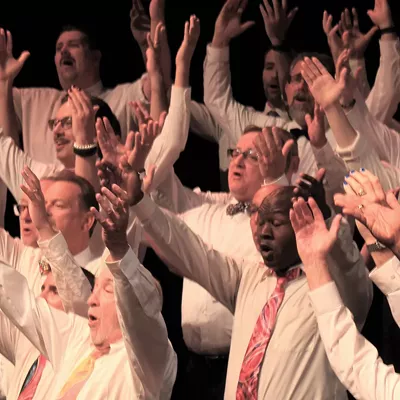Few would deny that Sept. 11, 2001, is one of the most catastrophic attacks ever perpetrated in the United States. As we watched, two enormous buildings—symbols of power and prosperity, and full of working citizens—crumbled and disintegrated into a massive cloud of horrific proportions.
Ten years later, we still try to reconstruct the particulars of these horrors, seeking to empathize with the individuals who died that day. What were they doing when the planes hit the buildings? How long was it before they realized what had happened? How did they cope in those terrifying moments? Were they paralyzed by fear, or frantic to the point of dismissing all reason? We can never really know, but we feel obliged to connect with those fellow citizens, to try to understand.
Elevator is Patrick Carson's attempt to help us connect. A Tucson writer who has spent years working in the film industry, Carson was again struck by the tragedy on the eve of its anniversary, and, more specifically, the elevators in the Twin Towers. He began researching the subject and found that the elevator system was quite complicated and unique. Thinking about the people trapped within those elevators, he wrote a screenplay which he has sold, according to the program.
Then he decided that the story would work as a play as well. So Carson reworked the script and directed a production which was presented a few weeks ago for a weekend at Pima Community College. The play seemed to attract a sizable interest, and a couple of weeks ago, with a bit of personnel-juggling, it began a run at the Arid Rose Theater's new digs on South Fourth Avenue. It runs through this weekend.
The show was independently produced rather than offered as a production by an established Tucson theater, although in this "return engagement," the Red Barn Theater is given a producing credit. The actors are typical of community-theater personnel, folks who are not really trained in the skills of the profession, but who love theater and have committed themselves to fleshing out Carson's vision.
What results is a production which gives us a peek into the events of that infamous day—but ultimately doesn't take us there emotionally. That's really what we want to experience as theater-goers, whether the result is laughter or being genuinely moved.
In some ways, one can't help but be moved by what we witness. The very nature of the story compels us. We understand all too well the impact of that day, and we know what will happen to the folks trapped in the elevator. However, they do not. This is actually what provides the tension, the drama, that draws us in and keeps us watching. The play itself does not have a typical plot, involving a conflict between characters or within a character. Rather, Carson has allowed the course of the event itself to provide a sense of movement.
This sets up a peculiar circumstance: We really do want to put personal faces on the tragedy of that day, and pay our respects by doing so. At the same time, we are fascinated in the same way that we are when we witness some tragic highway accident, when we watch even though we probably should look away. This is human nature, of course, but it is this aspect of our nature which ensures that our attention to the story is held—even though what may have happened in that elevator is not in itself compelling theater.
Carson has said that his play is "fact-based," meaning that he has used accounts by witnesses and survivors to knit together a reasonable fictitious rendering, and to create characters who share traits with the real folks involved.
There's a maintenance worker (Robert Ulsrud); a young secretarial assistant (Tonya Shank); a pregnant Muslim woman who we learn has a Jewish husband (Whitney Morton); and a middle-age philanthropist crippled in both body and spirit (Scott Berg). There's also a wealthy man (David Updegraff) who perceives himself as powerful and important, but who is pretty much just a well-dressed asshole. His older female assistant (Joanne Anderson) is constantly apologizing for his behavior and tries to soothe the fears of the captives. As their situation drags on, and they learn the nature of what has happened, there are confessions, musings and acts which reveal the essence of each of them as they try to deal with the fate they all share.
The possibility exists that we could take from this story the realization that this is actually the fate we all share—elevator or no. (I keep thinking of Jean-Paul Sartre's No Exit.) The play really doesn't attempt to make us realize that, even though the story is ripe with that possibility, which could deliver a more thought-provoking effect as well as a greater emotional resonance. As it is, it's almost like we're watching a documentary, interested but detached.
Sound plays a huge role in this production. The opening music is grand and cinematic, and a bit big for the setting. There are also punctuations of bangs and crashes and more music. It works fairly well, except there was this constant whooshing sound—like the wind howling. It just seemed odd and distracting, particularly because it often drowned out the actors. There may have been wind whistling around at the Twin Towers, but it seems out of place here.
This is an interesting but rather skeletal piece, begging to be fleshed out with richer characterizations and hinting at a depth it doesn't quite reach. But it does indeed remind us of the appalling horrors that real folks endured as they fatefully stepped into an elevator on that sunny September morning.








